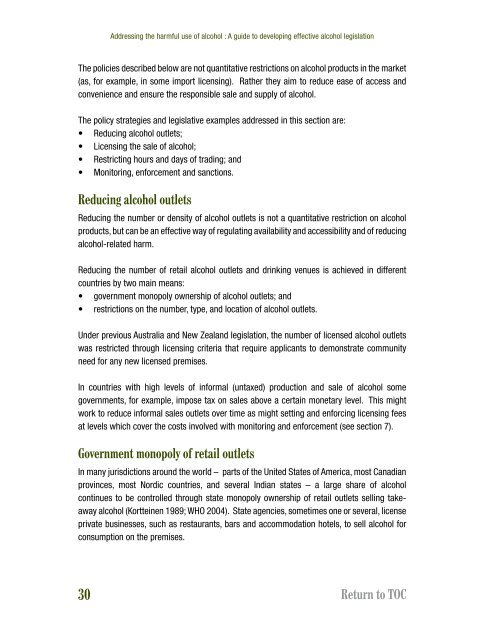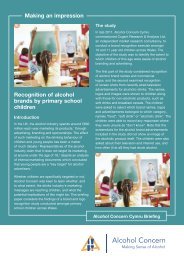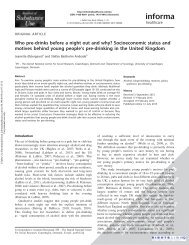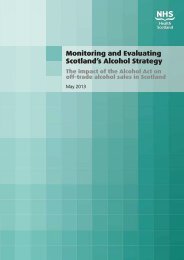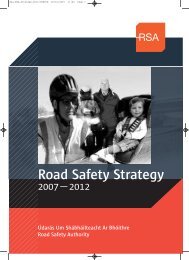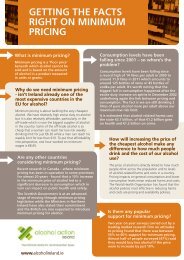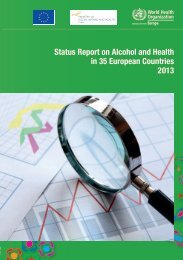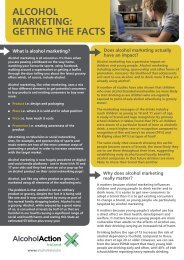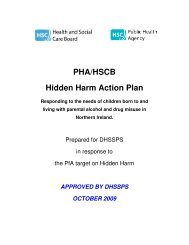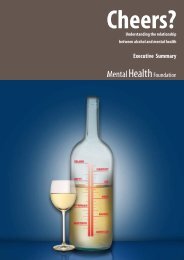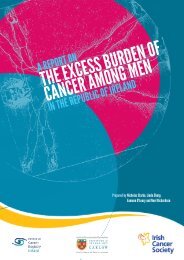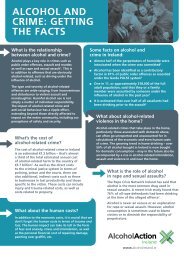Addressing the harmful use of alcohol - WHO Western Pacific Region
Addressing the harmful use of alcohol - WHO Western Pacific Region
Addressing the harmful use of alcohol - WHO Western Pacific Region
You also want an ePaper? Increase the reach of your titles
YUMPU automatically turns print PDFs into web optimized ePapers that Google loves.
<strong>Addressing</strong> <strong>the</strong> <strong>harmful</strong> <strong>use</strong> <strong>of</strong> <strong>alcohol</strong> : A guide to developing effective <strong>alcohol</strong> legislation<br />
The policies described below are not quantitative restrictions on <strong>alcohol</strong> products in <strong>the</strong> market<br />
(as, for example, in some import licensing). Ra<strong>the</strong>r <strong>the</strong>y aim to reduce ease <strong>of</strong> access and<br />
convenience and ensure <strong>the</strong> responsible sale and supply <strong>of</strong> <strong>alcohol</strong>.<br />
The policy strategies and legislative examples addressed in this section are:<br />
• Reducing <strong>alcohol</strong> outlets;<br />
• Licensing <strong>the</strong> sale <strong>of</strong> <strong>alcohol</strong>;<br />
• Restricting hours and days <strong>of</strong> trading; and<br />
• Monitoring, enforcement and sanctions.<br />
Reducing <strong>alcohol</strong> outlets<br />
Reducing <strong>the</strong> number or density <strong>of</strong> <strong>alcohol</strong> outlets is not a quantitative restriction on <strong>alcohol</strong><br />
products, but can be an effective way <strong>of</strong> regulating availability and accessibility and <strong>of</strong> reducing<br />
<strong>alcohol</strong>-related harm.<br />
Reducing <strong>the</strong> number <strong>of</strong> retail <strong>alcohol</strong> outlets and drinking venues is achieved in different<br />
countries by two main means:<br />
• government monopoly ownership <strong>of</strong> <strong>alcohol</strong> outlets; and<br />
• restrictions on <strong>the</strong> number, type, and location <strong>of</strong> <strong>alcohol</strong> outlets.<br />
Under previous Australia and New Zealand legislation, <strong>the</strong> number <strong>of</strong> licensed <strong>alcohol</strong> outlets<br />
was restricted through licensing criteria that require applicants to demonstrate community<br />
need for any new licensed premises.<br />
In countries with high levels <strong>of</strong> informal (untaxed) production and sale <strong>of</strong> <strong>alcohol</strong> some<br />
governments, for example, impose tax on sales above a certain monetary level. This might<br />
work to reduce informal sales outlets over time as might setting and enforcing licensing fees<br />
at levels which cover <strong>the</strong> costs involved with monitoring and enforcement (see section 7).<br />
Government monopoly <strong>of</strong> retail outlets<br />
In many jurisdictions around <strong>the</strong> world – parts <strong>of</strong> <strong>the</strong> United States <strong>of</strong> America, most Canadian<br />
provinces, most Nordic countries, and several Indian states – a large share <strong>of</strong> <strong>alcohol</strong><br />
continues to be controlled through state monopoly ownership <strong>of</strong> retail outlets selling takeaway<br />
<strong>alcohol</strong> (Kortteinen 1989; <strong>WHO</strong> 2004). State agencies, sometimes one or several, license<br />
private businesses, such as restaurants, bars and accommodation hotels, to sell <strong>alcohol</strong> for<br />
consumption on <strong>the</strong> premises.<br />
30 Return to TOC


